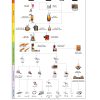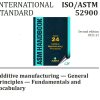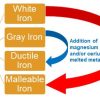Stainless steels owe their widespread use to a combination of unique properties that have advantages over those of other steels and nonferrous metals for many applications. The principal outstanding characteristics are their resistance to corrosion in many environments, their good mechanical properties over an extremely wide range of temperatures, and their superior resistance to oxidation and scaling at very high temperatures.
These unique properties are achieved through substantial additions of chromium to iron and carbon, with or without the addition of other elements such as nickel, manganese, molybdenum, and nitrogen. Chromium, however, is the key ingredient since a dramatic increase in corrosion resistance occurs when a level of about 10.5% chromium is reached. Steels with at least 10.5% chromium have traditionally been designated as stainless steels.
These steels attain their stainless characteristics by virtue of their ability to form an invisible, adherent, chromium-rich oxide film which strongly resists attack by the atmosphere and many industrial gases and chemicals.
A complete list of pertinent ASTM standards has been selected from the “stainless steel manual, Iron and steel society”
It is worth mentioning that some of these standards may have been updated or withdrawn.






